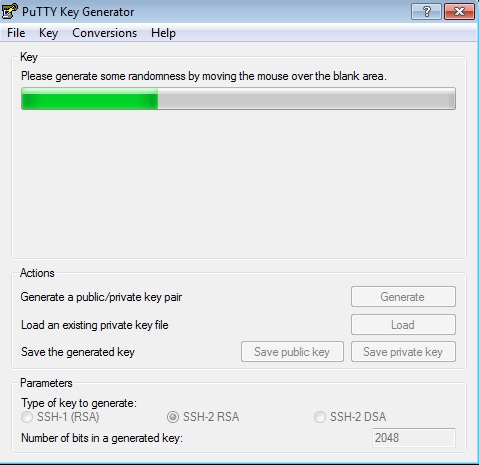

- #TUTORIAL SSH KEYGEN WINDOWS HOW TO#
- #TUTORIAL SSH KEYGEN WINDOWS INSTALL#
- #TUTORIAL SSH KEYGEN WINDOWS WINDOWS 10#
- #TUTORIAL SSH KEYGEN WINDOWS PASSWORD#
- #TUTORIAL SSH KEYGEN WINDOWS MAC#

If you assign your new key a unique file name, you can make it single purpose for logging into a specific computer (like an sftp server). On your local client computer that you will be using to log in from, create an ssh-key pair with ssh-keygen.
#TUTORIAL SSH KEYGEN WINDOWS WINDOWS 10#
You must keep your private key secure.Ĭreating an SSH public/private key pair STEP 1: Create an SSH-Key on Linux, Apple or Windows 10 If you loose your private-key or somebody gets a copy of it, anyone can use it if you did not generate a passphrase for it.Enabling a pass-phrase on your private key greatly enhances its security.
#TUTORIAL SSH KEYGEN WINDOWS PASSWORD#


Unfortunately, SSH-Keys do not disable password authentication on existing accounts, they just provide an alternate method for authenticating. They can enhance the security of your account in some circumstances, if password based authentication is replaced with key based authentication.Īn SSH-Key has security advantages to username/passwords - they are not vulnerable to brute force password attacks, or keystroke logging, or just using poorly chosen passwords. The original article was posted in 2011 by Mladen Lotar.SSH-keys are an alternate form of identification (alternate to username/password) that can be used to authenticate access to resources that are available using SSH or SFTP. Note! This article was revised on Jul 26, 2019. I hope this wasn’t too complicated to follow, and also I hope it was helpful to someone! Most of the popular repositories will give you web interface access to the application, and here’s how it looks like on Github:Īfter this step, you’re ready to start using Git. You need to give your public key to the repository in order to pair the Git server with your local machine (that’d be steps 4. When you create private/public SSH keys on your machine (that’s what you did in the above steps), it’s not enough.
#TUTORIAL SSH KEYGEN WINDOWS MAC#
Note: your_home_directory is either C:\Users\your_username (on Windows Vista / 7 / 8 / 10), or C:\Documents and Settings\your_username (on Windows XP) Mac Be sure that you don’t copy any whitespace while copying public key’s content (id_rsa.pub).Open file your_home_directory/.ssh/id_rsa.pub with your favorite text editor, and copy contents to your Git repository’s keys field ( GitHub, beanstalk, or any other repository provider), under your account.Type in the following: ssh-keygen -t rsa (when prompted, enter password, key name can stay the same).Open Git Bash that you just installed (Start->All Programs->Git->Git Bash).
#TUTORIAL SSH KEYGEN WINDOWS INSTALL#
#TUTORIAL SSH KEYGEN WINDOWS HOW TO#
Hi there! This post will be pretty straightforward and will cover Windows, Mac, and Linux, so if you don’t know how to do it already, read on.


 0 kommentar(er)
0 kommentar(er)
